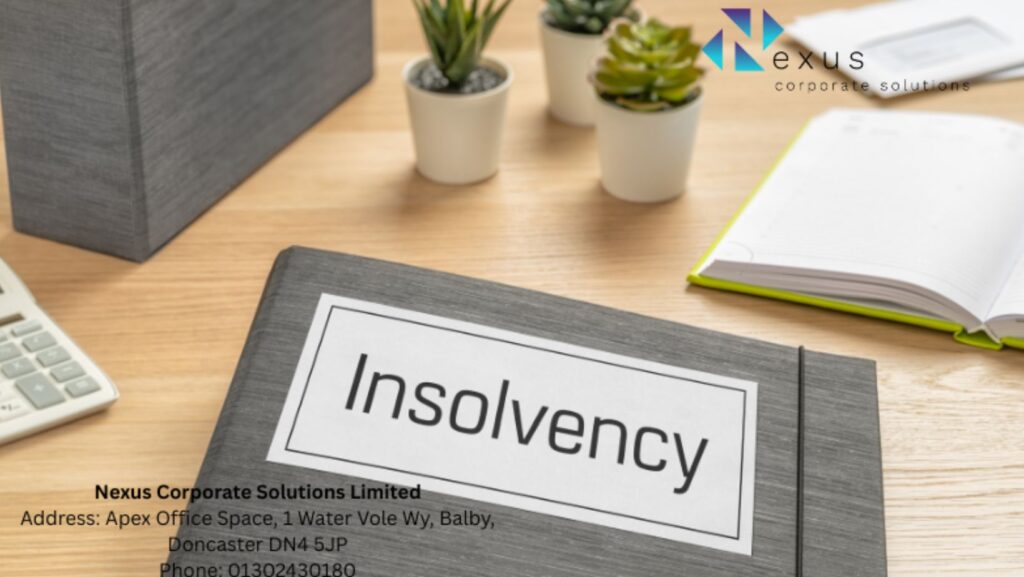Running a business comes with its share of ups and downs—but when financial struggles start to escalate, understanding what insolvency is becomes crucial. For many directors, the word insolvency can trigger stress, uncertainty, and fears about losing assets, damaging the brand, or even facing legal consequences. However, seeking timely insolvency advice can make all the difference. By acting early and getting the right guidance, you can explore your options, make informed decisions, and take steps to protect your company’s future.
Understanding Insolvency: What It Means for Your Business’s Future
In simple terms, insolvency is a financial state where a company is either unable to pay debts when they fall due (cash flow insolvency) or when more liabilities than the company’s assets (balance sheet insolvency). In both scenarios, the company is insolvent, and continuing to trade without addressing the issue can trigger insolvency proceedings, including compulsory liquidation. This may lead to serious consequences such as wrongful trading and even personal liability for company directors, especially when creditor debts or obligations to secured creditors remain unpaid.
It’s not just large corporations—many small and mid-sized businesses face financial distress at some point. Recognizing the signs early can help avoid deeper issues like bankruptcy insolvency and allow for the exploration of legally sound solutions to manage a company’s debts and protect the future of the business.
How to Know If Your Company Is Insolvent
Several red flags may indicate an insolvent company:
- Persistent missed payments to creditors
- Increasing debts with secured and unsecured creditors
- Legal threats or county court judgments
- Struggles with payroll, tax payments, or supplier obligations
- Growing pressure from other creditors chasing money owed
Once a company is unable to meet its obligations, it’s crucial to stop trading and seek advice from a licensed insolvency practitioner immediately.
The Insolvency Process Explained
The insolvency process begins when a limited company acknowledges it’s no longer viable under current conditions. This assessment typically involves reviewing the balance sheet and determining whether the business can still operate as a going concern. Depending on its financial position and ability to continue trading, the company may need to renegotiate payment terms or consider entering a formal insolvency procedure. Failing to act could expose the company to legal action from creditors seeking to recover what they’re owed. This could result in one of several formal insolvency processes, depending on whether the business can recover or must shut down.
Company Voluntary Arrangement (CVA)
A company voluntary arrangement is a legally binding agreement between the business and its creditors to repay debts over time. It allows the company to continue operating while giving creditors a better outcome than immediate liquidation. With help from a licensed insolvency practitioner, this process can restructure payments and offer hope for recovery.
Creditors Voluntary Liquidation (CVL)
If recovery isn’t feasible, a creditor’s voluntary liquidation may be necessary. In a CVL, directors voluntarily close the company, and a formal insolvency process begins under professional oversight.

All of the company’s assets are sold to repay creditors, and the company is removed from the register at Companies House.
Compulsory Liquidation
In compulsory liquidation, a creditor who is owed money by an insolvent company can apply to the court for a winding-up order. If the court grants the order, the Official Receiver takes control of the liquidation process, overseeing the sale of assets and distribution to creditors. This route often results in reputational damage, and once an insolvent company enters compulsory liquidation, it must cease trading immediately.
Members Voluntary Liquidation (MVL)
A member’s voluntary liquidation is used when a limited company is solvent but no longer needed. Perhaps the owner is retiring or restructuring. This tax-efficient closure allows for the distribution of the business’s assets and avoids the stigma of bankruptcy or insolvency.
The Role of the Insolvency Practitioner
A licensed insolvency practitioner plays a key role in assessing the financial state of the company, identifying all prospective liabilities, and ensuring the correct legal process is followed. They manage communication with creditors, explore payment plans, and help determine whether the business can continue to pay its debts or if company liquidation is the appropriate route. In some situations, an administrative receiver may be appointed to take control of the company’s assets on behalf of secured creditors. All actions are carried out in compliance with the Insolvency Act, ensuring that any resolution—whether a CVA, CVL, or MVL—is legally sound and transparent at every step.
Legal Obligations and Risks for Company Directors
Once a company is deemed insolvent, directors must stop prioritizing shareholders and act in the interest of creditors. Failure to do so may result in accusations of wrongful trading, director disqualification, or even personal liability.

Attempting to trade out of insolvency without expert help can deepen the company’s debts and expose directors to more severe consequences. Instead, consult an expert to help you understand your obligations and the safest way forward.
The Bigger Picture: Reputation, Recovery, or Closure
Facing corporate insolvency doesn’t mean failure—it means the business needs a strategic reset. Many companies that act early are able to recover, manage their cash flow more effectively, or close in an orderly manner, allowing directors to move forward and even start new ventures in the future. Whether the objective is to keep trading, restructure outstanding debts, or wind down operations, understanding the process and making informed decisions is crucial.
In many situations, addressing creditor debts and the business’s debts early can prevent further financial damage. Timely action often allows for partial or full repayment of remaining debt while avoiding asset loss, reputational harm, and prolonged financial strain.
Final Thoughts
Understanding what insolvency is is the first step in protecting your business, your assets, and your professional reputation. Whether your company is struggling with cash flow or payments, options like CVAs, CVLs, and MVLs exist to help.
If your company is insolvent, don’t wait. Consult a licensed insolvency practitioner, review your situation, and take action. It might just be the smartest business decision you make this year.



